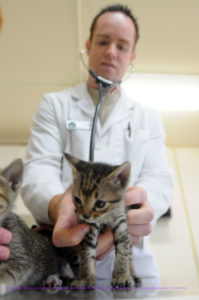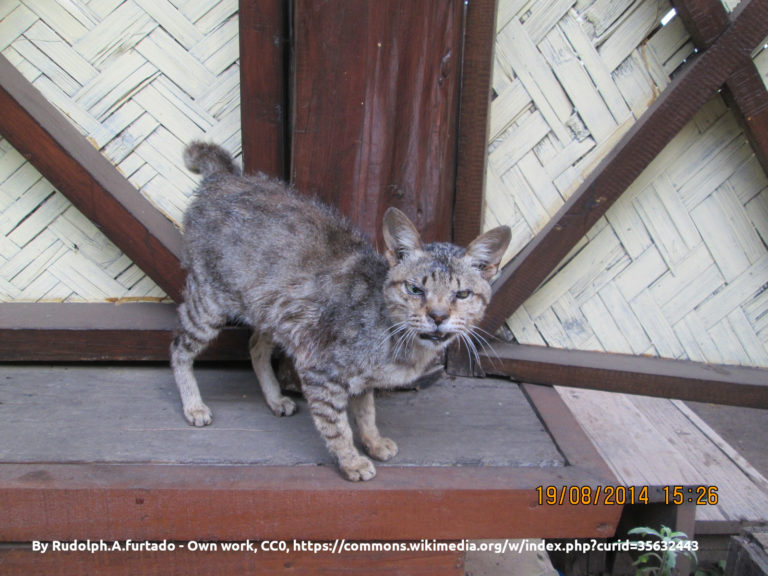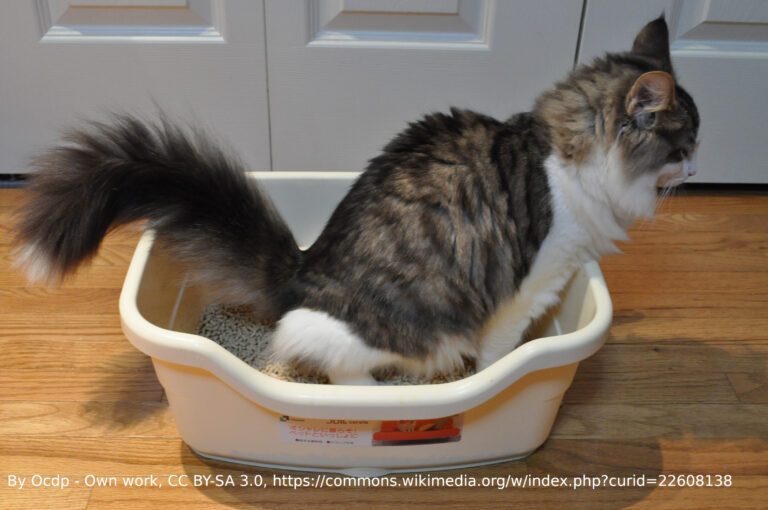Cat Pollen Allergy
 Cat pollen allergy exists – in other words, cats can get hay fever just like humans. And just like in humans it can be a minor thing, just a bit of a sniffle for a few days, or it can develop into an issue for you and your cat.
Cat pollen allergy exists – in other words, cats can get hay fever just like humans. And just like in humans it can be a minor thing, just a bit of a sniffle for a few days, or it can develop into an issue for you and your cat.
Read on to learn more about cat pollen allergy, its causes, symptoms and treatments.
How serious is cat pollen allergy?
In some cases, cat pollen allergy can lead to respiratory infections. A cat’s skin can also be affected, developing irritations and sores. These can become chronic.
If you notice your cat displaying symptoms that are lingering or becoming more severe, your cat needs to see the vet.
Causes and symptoms of cat pollen allergy
Cats can react to allergens they breathe in, or that they touch. In affected cats, pollen triggers an over-reaction of the immune system. This itchy response affects a cat’s lungs, skin and ears.
The obvious reaction to this is a cat scratching far more than usual, particularly at their ears which might give off a smell. They are likely to groom excessively, leading to more hair balls and even vomiting, and they may shake their heads and chew their paws. Fur loss is not uncommon, together with lesions and crusting.
Your cat could have runny nose and eyes, together with sneezing and coughing.
This is a long list of symptoms. a cat doesn’t need to display all of them to be suffering from a pollen allergy.
Diagnosis of cat pollen allergy
The first thing a vet will do is rule out any serious underlying health condition. They will talk to you about any changes in the cat’s life – this can be as significant as moving house or taking a new medication for another condition, or as small as having a new bed.
Next they will try to differentiate between a reaction to an environmental trigger, and a food allergy. Superficially the symptoms of food and environmental allergies or toxins can be the same, so initially your vet might have to put your cat on a test diet to rule out food allergies.
An oral/nasal swab will help the lab understand what’s going on for your cat. It’s likely to have blood taken for analysis. Blood samples can show antibodies produced in response to allergens.
An animal dermatologist might also be consulted. At the very least they can advise on care of your cat’s skin while the allergy is being addressed. If your cat is found to be suffering from a pollen allergy, the dermatologist can use skin prick testing to narrow down which pollens are causing the problem. This might all sound very involved, but the more information you have the better and can even lead to desensitisation treatment. This is a particularly good approach for cats that aren’t happy being kept inside.
Treatment of cat pollen allergy
Cats that go outside will have high pollen exposure. Grass, weeds and trees all produce pollen at different times of year. Pollen can travel a long way on the air, so a cat can come into contact with pollen from a tree miles away.
A cat that really suffers can be helped immediately and simply by keeping them indoors when pollen is high. Many weather forecasts include a pollen index so you can keep track of when levels are likely to be high. This is a great treatment for cats that don’t suffer really severe symptoms.
A cat with worse symptoms might well be prescribed an antihistamine such as cetirizine, just as a human would. These can become less effective over time and are most effective if prescribed before the season starts. They can also affect a cat’s kidney and liver, so rather than a long term treatment they can be used in the short term to make your cat more comfortable.
Ultimately there is no single treatment for cat pollen allergy. Together with your vet you can understand as much as possible about what your cat’s reacting to, and come up with the best approach. This will then need to be monitored and your cat will need regular check-ups, especially if taking antihistamines.



